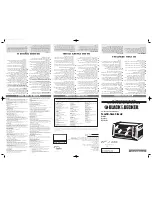
72
WARNING
Asphyxiation Hazard. Do not operate the boiler without the ball and ball support in place. Doing so
could result in flue gas leakage into the indoors resulting in personal injury or death from Carbon
Monoxide (CO) poisoning.
NOTICE
Attempting to clean the heat exchanger or trap with anything other than water could result in
condensate backup, causing the boiler to shut-down.
CAUTION
Do not over tighten fire door mounting nuts. Doing so could break the fire door mounting studs. If any
of these studs are damaged, the heat exchanger must be replaced. Use of a short 10mm box wrench will
reduce the risk of damaging these studs.
o.
Inspect the ignition electrode and flame rod
for deposits. Clean any found with steel wool. Do not use sand paper
or Emory cloth for this cleaning. Inspect the ceramic portion of both of these parts for cracks and replace if any are
found. Verify that the ignition electrode gap is within the range shown in Figure 13.2
p.
Inspect the blower gas valve assembly
, looking for dust, lint, or other debris that may have been drawn into this
assembly. Excessive deposits may be vacuumed out.
The blower/gas valve assembly used on the 150MBH and 180MBH may be disassembled to expose the
“swirl plate” (Figure 13.4). If it is necessary to clean the swirl plate, carefully note the orientation of all parts during
disassembly and use care not to damage the swirl plate vanes. The venturi assembly used on the 80, 100, and 120
cannot be removed from the blower.
Inspect all rubber and plastic components on the blower/gas valve assembly, looking for deterioration. Replace
blower and/or gas valve if deterioration is found.
q.
Inspect and clean the condensate trap
. Place a bucket under the condensate cleanout cap on the bottom of the
boiler (Figure 2.1) to catch water in the trap as well as the ball and ball support. Unscrew the cap, being careful
not to lose the ball or ball support. Flush any debris found in the trap with water – do not use other cleaning agents.
Reassemble the trap as shown in Figure 13.3.
r.
Reinstall the fire door/blower/gas valve assembly
, following the above steps in reverse order.
s.
Inspect the vent system to verify that
:
• All gaskets and joints between the boiler heat exchanger and terminal are leak tight.
• All supports are intact and vent system is properly pitched
• All pipe is in good condition. Look for damage such as cracks, heat distortion, discoloration, and embrittlement.
If any such damage is found, the pipe must be replaced and the cause of the damage identified.
• Vent/Intake terminals are in good condition, free from blockages, and still correctly located relative to doors,
windows,
decks,
etc.
• There is no gasoline, flammable liquids/vapors, or halogen based products stored in the vicinity of the
vent or inlet terminals. Also verify that there are no chemical products containing chlorine, chloride based salts,
chlorofluorocarbons, paint removers, cleaning solvents, or detergents stored near the air intake terminal.
Refer to Part VII (Venting) to re-assemble any vent system components that are disassembled during this
inspection. Also refer to Part VII for details on supporting, pitching, and terminating the vent system.
Summary of Contents for Shadow Series
Page 10: ...9 Figure 5 1 Wall Layout Mounting Hole Location...
Page 11: ...10 Figure 5 2 Boiler Mounting Bracket Installation Boiler Wall Mounting...
Page 17: ...16 FIGURE 7 4 WALL PENETRATION CLEARANCES FOR PVC VENT PIPE...
Page 34: ...33 FIGURE 7 24 INSTALLATION OF IPEX AND DIVERSITECH CONCENTRIC TERMINAL THROUGH ROOF...
Page 41: ...40 FIGURE 9 2 NEAR BOILER PIPING HEATING ONLY BOILER LOOP PIPING SHOWN SHADED...
Page 42: ...41 FIGURE 9 3a NEAR BOILER PIPING HEATING PLUS INDIRECT WATER HEATER...
Page 43: ...42 FIGURE 9 3b NEAR BOILER PIPING HEATING PLUS INDIRECT WATER HEATER...
Page 47: ...46 This page is intentionally left blank...
Page 50: ...49 FIGURE 10 2 LINE VOLTAGE FIELD CONNECTIONS FIGURE 10 3 LOW VOLTAGE PCB TERMINAL CONNECTIONS...
Page 52: ...51 FIGURE 10 4a 120V LWCO FIELD WIRING FIGURE 10 4b 24V LWCO FIELD WIRING...
Page 54: ...53 FIGURE 10 6 INTERNAL WIRING CONNECTIONS DIAGRAM...
Page 55: ...54...
Page 62: ...61 Lighting and Operating Instructions...
Page 82: ...81 FIGURE 14 6 CONTROLS LOCATION FIGURE 14 7 PRESSURE SWITCH TUBING CONNECTIONS...
Page 87: ...86 Blower Gas Valve Assembly for 150 180...
Page 90: ...89...
Page 103: ...102...
















































